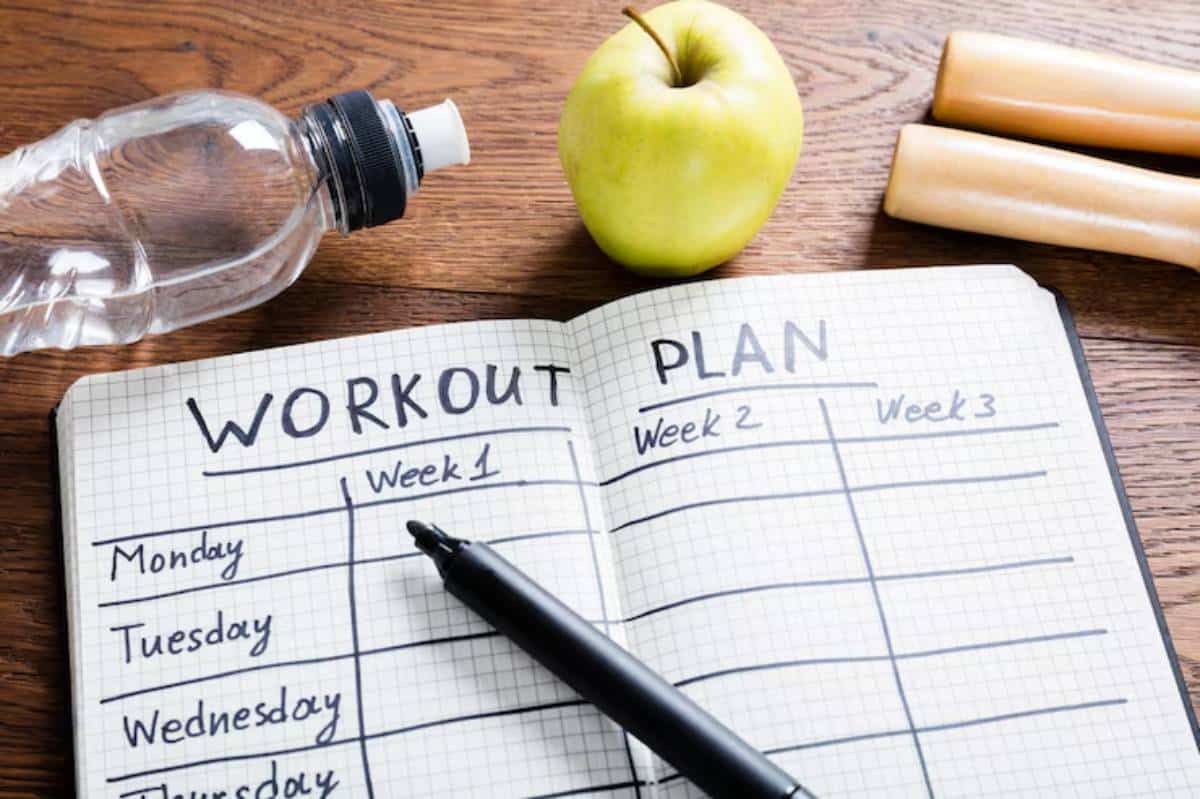
How to Create a Weekly HIIT Plan for Fat Loss
High-Intensity Interval Training (HIIT) is your secret weapon for rapid fat loss. This fast-paced workout ignites your metabolism like never before. It enhances heart health and keeps calorie burn blazing post-exercise. So, how do you craft a weekly HIIT plan tailored to your fat loss aspirations? This guide steers you toward designing a HIIT routine that seamlessly fits your lifestyle. With it, you’ll unlock your most impressive results!
Pro Tip: Don’t skip these essential steps. They help prevent injuries and aid in recovery! Start with a five-minute dynamic stretch or light cardio to awaken your muscles. After your workout, cool down with gentle static stretches and deep breaths. This helps your body relax and recover.
Important: Pay attention to signs of fatigue or overtraining. Rest is as important as the workout itself. Symptoms of overtraining include poor sleep, irritability, and chronic soreness.
Quick Guide: Key Steps to a Successful HIIT Plan

- Set Clear Goals: Decide what you want from your HIIT plan. This could be losing weight, boosting endurance, or getting fitter overall.
- Check Your Fitness Level: Adjust your HIIT workouts to fit your fitness level. This helps prevent injury and promotes progress.
- Pick the Right Exercises: Use a mix of cardio and strength workouts. These should focus on different muscle groups.
- Schedule Your Workouts: Aim for at least three sessions a week. Don’t forget to include rest days in between.
- Track Your Progress: Write down your workouts. This helps you stay motivated and make changes when needed.
Understanding the Core of HIIT
High-Intensity Interval Training (HIIT) packs a punch with fast, furious workouts. Dive into spirited bursts of intensity, then sail into gentle recovery. This dynamic method accelerates fat loss and elevates your fitness game, both aerobic and anaerobic. A study from the Journal of Obesity highlights how HIIT trims belly fat and reduces body weight. Best of all, no restrictive diet is required!
Rev up your routine with HIIT workouts that last 10 to 30 minutes. Perfect for those with packed schedules, these high-intensity sessions let you pack a punch in a pinch. Why waste time on steady cardio when you can maximise results in less time?
After a workout, your body boosts human growth hormone (HGH) production by up to 450%. This change turns your body into a fat-burning furnace and helps keep your muscles. Get ready to feel the burn and reap the rewards!
Step-by-Step Guide: Crafting Your HIIT Plan
Step 1: Set Your Goals
Before you embark on your HIIT adventure, envision your targets clearly. Specific goals illuminate your path, shaping every workout and schedule. Whether you aim to shed pounds, sculpt muscles, or energise your heart, clarity fortifies your focus.
Break down your aspirations into bite-sized, manageable milestones. Conquer three weeks of training as a short-term triumph. Then, set your sights on long-term victories like reducing body fat or enhancing endurance.
Step 2: Assess Your Fitness Level
Understanding your fitness level is your first line of defence against injuries. Beginners should ease into the rhythm with shorter intervals, like 20 seconds of effort followed by 40 seconds of rest. Meanwhile, seasoned warriors can tackle more formidable challenges, such as 40 seconds on and only 20 seconds off.
Test your endurance by timing basic movements. How long can you jump jack or squat before fatigue sets in? This will set your starting line for success.
Step 3: Select Your Exercises
Pick exercises that bring you joy while pushing your limits. A well-rounded HIIT session might feature:
- Cardio Burst: Sprinting, jumping jacks, or high knees to get your heart racing.
- Strength Strikes: Push-ups, squats, or burpees to build your power.
- Core Conquerors: Planks, mountain climbers, or bicycle crunches to chisel your midsection.
Include full-body movements to engage multiple muscles and maximise calorie incineration.
Step 4: Plan Your Weekly Schedule

A sample HIIT agenda might appear as follows:
- Monday: Full-body HIIT (20 minutes of exhilaration)
- Tuesday: Rest or gentle recovery (e.g., walking, stretching)
- Wednesday: Cardio-centric HIIT (15 minutes of heart-pounding fun)
- Thursday: Rest
- Friday: Strength-focused HIIT (20 minutes of muscle magic)
- Saturday: Core + Cardio HIIT (15-20 minutes of power-packed action)
- Sunday: Optional light activity or complete rest
Be sure to weave ample recovery time into your plan. This strategy helps fend off overtraining while enhancing performance.
Step 5: Monitor Your Progress
Tracking your progress is vital for motivation and tweaks along the way. Use a fitness app or a trusty journal to record your journey. Note changes in your performance and body composition.
Monitor the rounds you crush, your rest periods, perceived effort, and how you feel during each workout. This data is crucial for refining your plan as you advance.
Best Practices & Additional Insights
Unlock the full power of your HIIT workouts with these smart strategies:
- Revamp Your Routines: Shake things up! Regularly mixing exercises and intervals keeps boredom at bay and banishes fitness plateaus. Try electrifying formats like Tabata (20 seconds of fury, 10 seconds of rest) or EMOM (every minute brings new challenges).
- Incorporate Strength Training: Build a fortress of muscle while torching fat! Strength training ramps up your resting metabolism and sharpens your posture. Blend classic weightlifting with high-energy HIIT circuits for a dynamic duo.
- Hydration is Key: Think of hydration as your secret weapon for peak performance! Sip water before, during, and after workouts. This habit becomes even more vital when the sun blazes overhead.
FAQs

Q1: How often should I do HIIT for fat loss?
A1: Aim for at least three sessions per week, ensuring you have rest days in between to allow for recovery. 4-5 sessions can be effective for more advanced routines, provided recovery is prioritised.
Q2: Can beginners do HIIT?
A2: Absolutely. Beginners should use short intervals and take long rest breaks. As they get fitter, they can slowly increase the intensity. Starting with bodyweight movements is ideal to master form.
Q3: Is HIIT suitable for everyone?
A3: HIIT is usually safe, but people with certain health issues should talk to a healthcare provider before starting a new exercise routine. Joint issues, for example, may require modification of high-impact movements.
Conclusion: Creating a Weekly HIIT Plan for Fat Loss
Creating a weekly HIIT plan for fat loss requires thoughtful planning and consistency. Set clear goals, pick the right exercises, and track your progress. This way, you can use HIIT to reach your fitness goals. Success comes from balancing hard workouts with recovery. Also, eat a healthy diet to support your training.
Ready to take your fitness journey to the next level? Begin creating your own HIIT plan today. Enjoy the excellent benefits for yourself!


